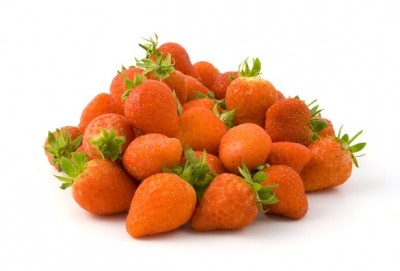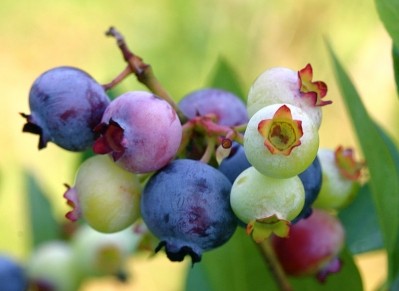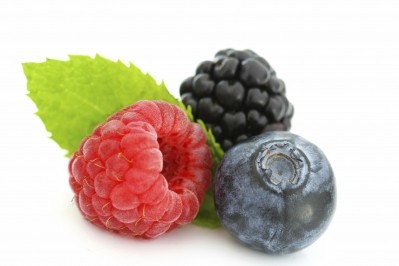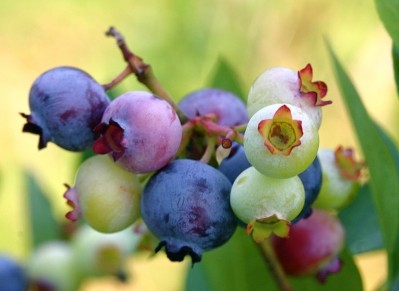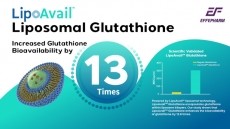Berries high anthocyanin content may not make it past the mouth, warn researchers
The new study, published in Food Chemistry, is the first to expose the beneficial compounds found in berries to real samples of human saliva and study exactly what is and is not broken down within the mouth. The team found that many common berry anthocyanins are broken down by saliva – calling in to question whether these compounds can have any health benefits after consumption or whether it is in-fact the metabolites that provide any purported health benefits.
Led by Professor Mark Failla from Ohio State University, USA, the researcher team said that anthocyanins were particularly susceptible to break-down by saliva in the mouth, when compared to other flavonoid compounds. They added that this break down of beneficial compounds is done primarily by bacterial populations living in the mouth and saliva.
"Increased intake of fruits and vegetables is associated with decreased risk of some chronic diseases,” said Failla.
"An understanding of the metabolism of these compounds, and the relative activities of the compounds in the consumed fruit and their metabolic products, is needed to make scientifically sound dietary recommendations and to develop effective delivery vehicles for the mouth," he explained.
Failla added that all fruits are ‘unique’ because they have specific chemical compositions that vary between different species.
"There are many different edible berries," he said. "Some might be better for providing health-promoting effects within the oral cavity, whereas others may be more beneficial for colonic health. We simply do not know at this time."
Metabolite benefits?
However, the lead researcher said that another possibility may be that is it not the berries flavonoid compounds themselves, but rather the products of their degradation, that actually promote health.
"Our observations suggest that the bacteria within one's oral cavity are a primary mediator of pigment metabolism. The bacteria are converting compounds that are present in the foods into metabolites," said Failla.
"One area of great interest is whether the health-promoting benefits associated with eating anthocyanin-rich fruits like berries are provided by the pigment itself, the natural combinations of the pigments in the fruit, or the metabolites produced by bacteria in the mouth and other regions of the gastrointestinal tract."
He added that his team’s early findings could contribute to the further development of confectionaries, gums and other delivery devices for the prevention and possibly the treatment of conditions such as periodontal disease and oral cancers.
"If anthocyanins are the actual health-promoting compound, you would want to design food products, confectionaries and gels containing mixtures of anthocyanins that are stable in the mouth,” said Failla.
"If, on the other hand, the metabolites produced by the metabolism of anthocyanins are the actual health-promoting compounds, there will be greater interest in fruits that contain anthocyanins that are less stable in the oral cavity.”
"We lack such insights at this time."
Study details
Failla and his team exposed extracts of anthocyanin pigments from blueberries, chokeberries, black raspberries, red grapes and strawberries to samples of saliva collected from 14 healthy people. The 14 participants were all between the ages of 21 and 55 years. Each was asked to collect saliva in the morning before they had eaten breakfast or brushed their teeth. The research participants later collected additional saliva samples before and after they had rinsed their mouths with an antibacterial liquid.
The five fruits selected for study allowed the scientists to test the six distinct families of the anthocyanin pigments. Researchers purified the anthocyanins from each berry type and added the extracts to saliva.
The extent of the pigment degradation in saliva was primarily a function of the chemical structure of a given anthocyanin, said Failla, explaining that two families of anthocyanins consistently degraded when exposed to saliva: delphinidin and petunidin.
Four other families were more stable: cyanidin, pelargonidin, peonidin and malvidin.
Source: Food Chemistry
Volume 135, Issue 2, Pages 738–747, doi: 10.1016/j.foodchem.2012.04.110
"Susceptibility of anthocyanins to ex vivo degradation in human saliva"
Authors: Kom Kamonpatana, M. Mónica Giusti, Chureeporn Chitchumroonchokchai, Maria MorenoCruz, Ken M. Riedl, Purnima Kumar, Mark L. Failla
